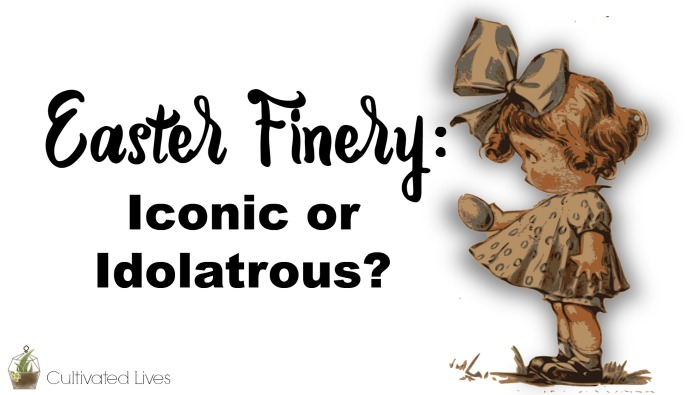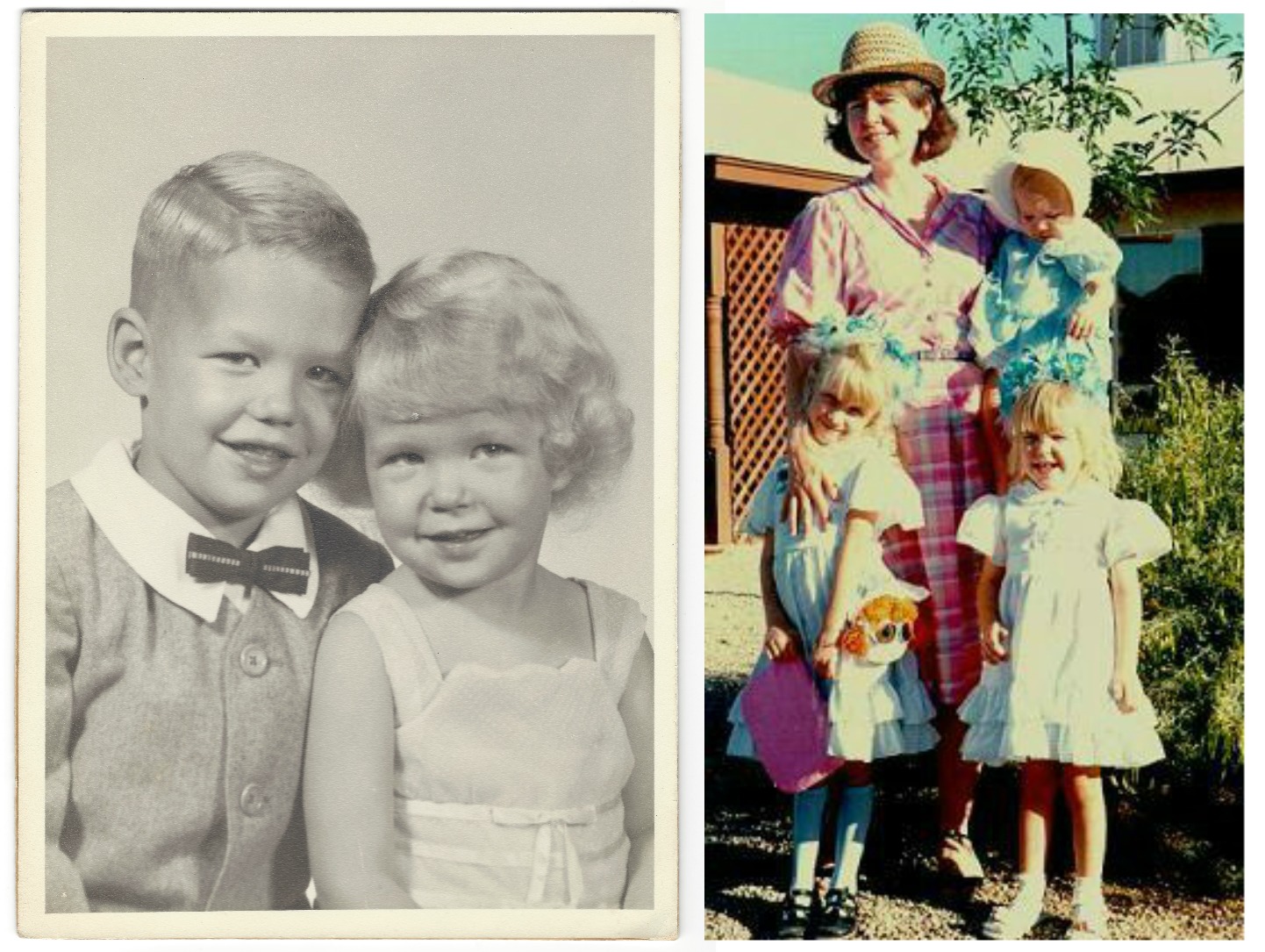
When I was a young teenager my mother would not let me wear a black party dress. She told me that it was “too mature” for me. She said it sent the “wrong message” to the young men. And yet a century earlier a young girl dressed in black sent the “right message” – the message that she was a conservative girl of good morals. So was black a symbol of good or bad?
First, it is important to think about what black is. Black is a color. It is also an image – today it can convey sophistication (the little black dress), mourning (black funeral clothes), or even counter culture (Gothic black).
Images are all around us. An image is a likeness or representation of something –a person, an action, a product, or an idea. Many images are innocuous and are quite helpful. Think of Apple, Nike swish, heart, thumbs up, Facebook, Pinterest, etc.
But some images are idols – a false replacement for truth or a replacement for the true God. By contrast, an image can also be an icon – a window through which we see truth and/or God. Contemplating the difference between idols and icons can be helpful as we strive to teach and display truth in our lives. So how do we do this?
Rewind to the Easter celebrations of my childhood.
My mother taught me how to celebrate the joy of Easter with a new beautiful dress. In fact I wore all new clothing from new underclothes, to the new dress, to new shoes, and a hat and gloves. She explained that because Jesus rose from the dead He made all things new. I knew we were celebrating the new life that Jesus won for us when He conquered death. I knew that He had made all things new, and that I was representing that on Easter Morning. This tradition continued with my children, and they are doing the same with their children.

Years later, in Of Penguins and Golden Calves, Madeleine L’Engle wrote that she would not dress her girls in new Easter clothes because she thought these clothes were idolatry. She thought that the clothing usurped the preeminence that the resurrection of Christ was to have on that day.
I was stunned when I read this. I had never considered that Easter clothing could be idolatry; And this thought from an author who is known as a liberal and unorthodox Christian. What could have caused her to make this extreme statement? In order to understand one must consider the context of Madeleine’s life. She and her husband were raising their children in New York City in the late 40’s and the 50’s. Their community was theater people and entertainers. In her day, and in her localized culture, Easter clothing might have been an idol…. a distraction from the truth of the resurrection, a time to show off your fashion sensibility. Consider the film Easter Parade made in 1948. It is Christ-less, but fashion-filled. By opting out of the fashion show, L’Engle stood out in her culture the way someone who does not celebrate Halloween does in my local culture.
Discerning Icon from Idol
How should we respond to this idea of eschewing Easter finery? With quaint disdain for Ms. L’Engle?
We need to evaluate the Easter images in our life. Is this image an icon? Is it a window through which we see truth? Or is it an idol – something that obscures truth or our love for God? This evaluation must take into consideration our time and our local culture. While it might not be wrong inherently, like new clothing, we must still consider if it obscures truth in our day, in our culture, with our family and community.
We also must evaluate what saints have done in the past; what was an icon for one generation can become an idol for the next generation. When the people of Israel grumbled against Moses, fiery serpents appeared and bit the grumblers so that many of them died. When the people repented, the Lord directed Moses to make a bronze serpent, set it on the pole, and walk through the assembly lifting the icon high. If anyone would look to the bronze serpent he would live. (Numbers 21:4-9) This was a beautiful icon foreshadowing what was to come. This was a window to the truth of Jesus’ coming. The Father made Jesus to be sin who knew who sin (2Cor. 5:21) and this was represented in the Serpent (a sign of evil and sin) and it was made of bronze – a symbol of judgement. And all who looks to the Son and believes will be saved. (John 6:40) During the time of Hezekiah the people of Israel had found the bronze serpent and rather than seeing it as an icon, they made offerings to it. They made this amazing icon an idol. Hezekiah was commended by the Lord because he broke the idol into pieces. (2 Kings 18:4)
Finally, we should be ready to gently explain why a particular image is either an icon or an idol in our lives and in our time but not assume our conclusion applies to everyone else. All the while we must let the Lord deal with other people’s evaluations and decisions. Each generation needs to consider this for their generation, for their children, and for their own self. How do we celebrate and live life in such a way to provide windows to truth, and not obscure truth?
And as we meet people who are abstaining from an idol in their lives, we should not judge them, or patronize them by condescendingly calling them “weaker” brothers. They may be weak, or they may be more sensitive, or they may be more perceptive. We do not ridicule or deride them. We consider their analysis, and we look to ourselves and our family. We turn from the idols that are drawing us away from the Lord. We keep the icons that draw us close to truth, and to the maker of Truth.


Thought provoking. I hesitated and actually chose not to “Instagram” our family Easter photos for the reason of focusing too much attention on our attire, rather than Jesus. Thanks for exposing both sides. I agree with you whole-heartedly.
K2 looks a lot like your brother, Colene! Thanks for the article. I never thought about it one way or the other before.
Doesn’t he? Other people don’t see it since my bro is a big man with a bushy beard! 🙂
So very helpful! Getting deep into the heart of it. Thank you!
I also wanted to say how blessed I’ve been by your talk at the AFHE convention about raising adults. Its been a great help and encouragement to our family.
Thanks, Sarah! I will be at the AFHE convention again this year – I hope to see you if you are there.